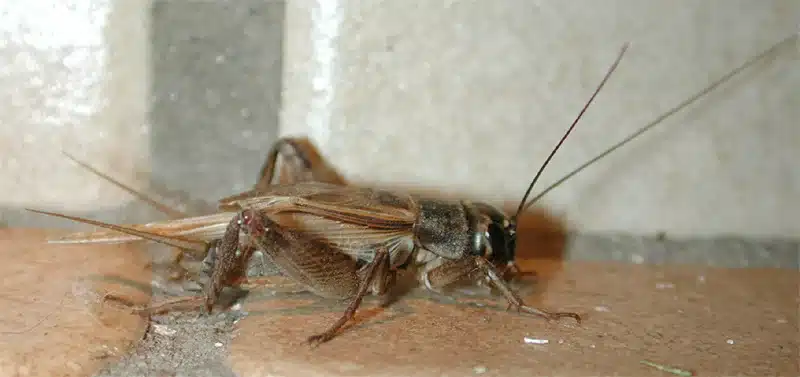Hearing chirping sounds from your basement or crawl space? You might be dealing with crickets that have found their way into your home. Understanding the cricket life cycle helps you identify which species you’re facing and choose the right treatment approach. As a registered technician who’s worked in pest control for four years, I’ve seen plenty of cricket issues around the DMV area during inspections.
Cricket Life Cycle Basics: What Cricket Look Like - Taxonomy and Anatomy
Crickets belong to Order Orthoptera, suborder Ensifera. The main families that cause household problems include Gryllidae (house and field crickets), Rhaphidophoridae (camel crickets), and Gryllotalpidae (mole crickets).
All crickets share some key features that help with identification. They have long, slender antennae and enlarged hind-leg femora for jumping. Most species have tympanal “ears” on their front tibiae, though camel crickets lack these organs.
Male crickets produce their characteristic chirping through stridulation. They rub their fore-wings together to create sound, which is part of their mating behavior during the cricket life cycle.
Cricket Life Cycle Stages: From Egg to Nymph to Adult
The cricket life cycle follows three main stages: egg, nymph, and adult. Female crickets deposit eggs in soil, organic matter, or protected areas depending on the species. House crickets can lay around 700 eggs during their lifetime.
Nymphal stages involve multiple molts as crickets grow larger. The number of instars varies by species and temperature conditions. Warmer temperatures speed up development significantly.
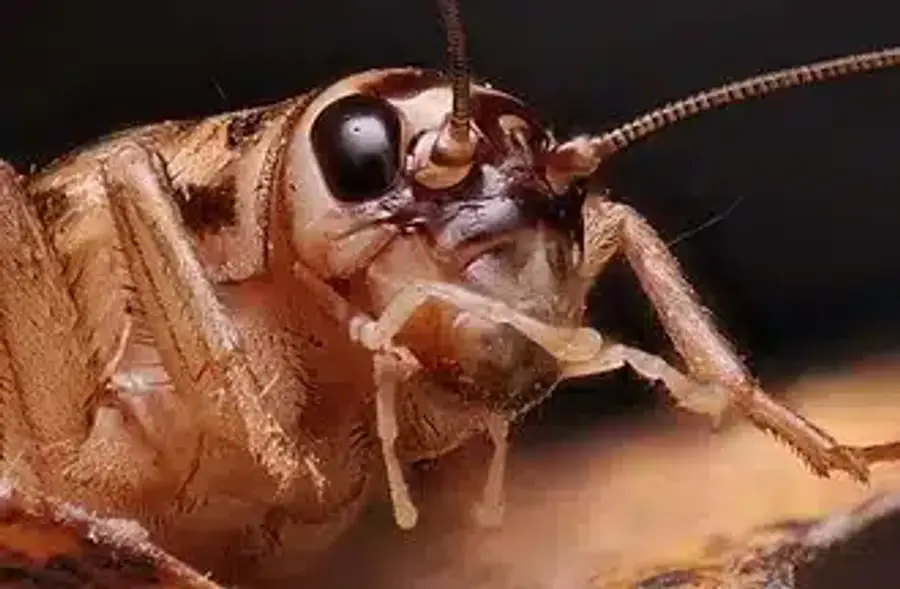
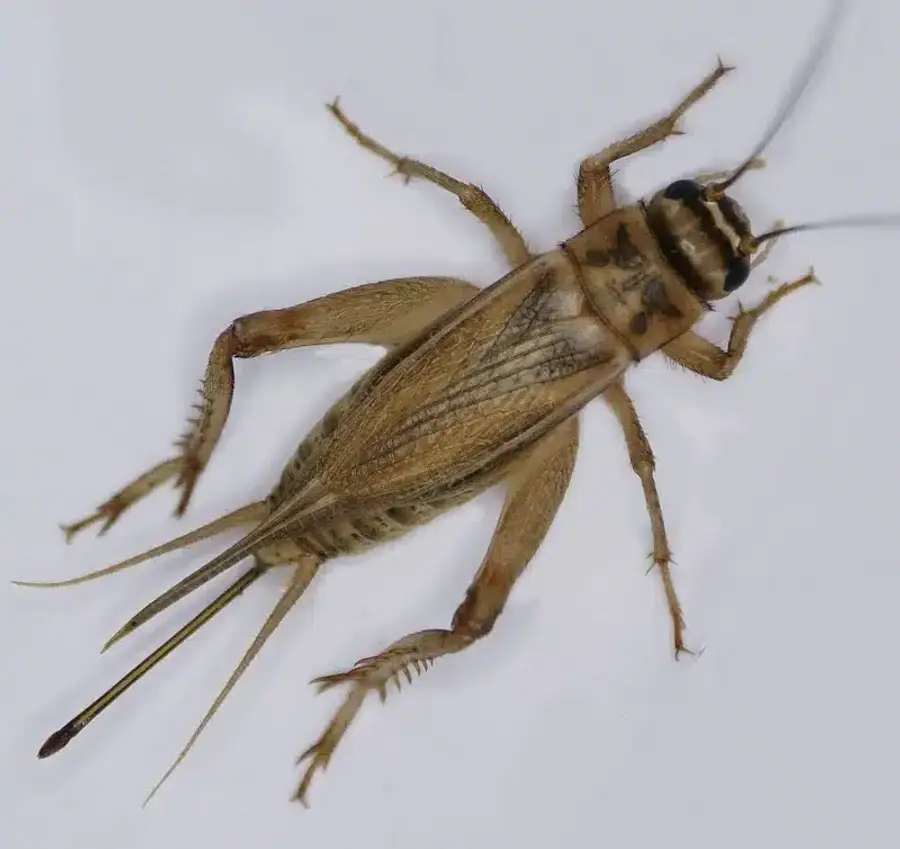

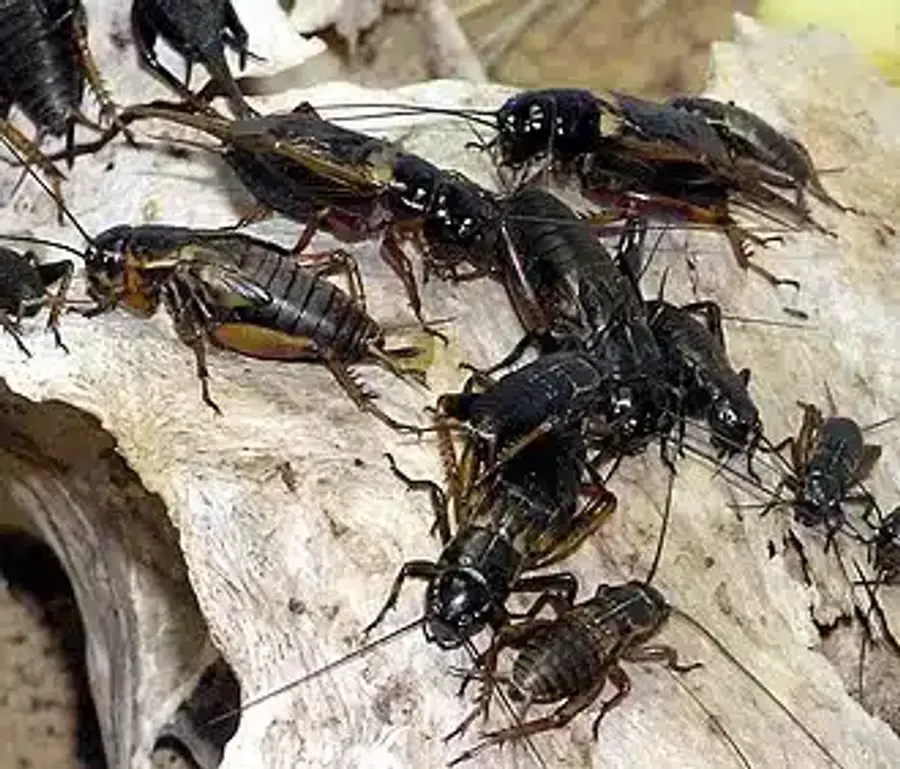
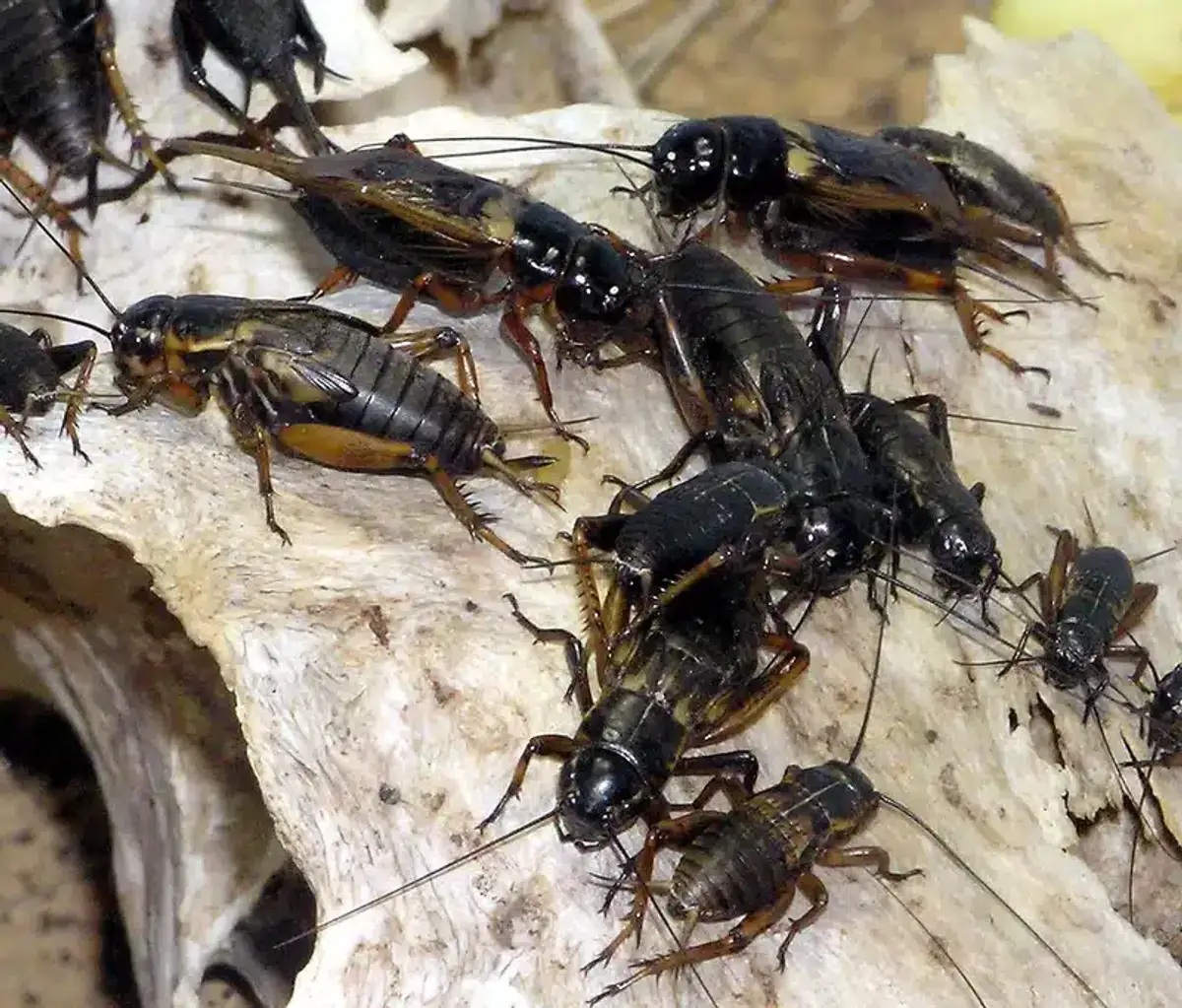
Adult crickets emerge ready to mate and continue the cycle. The entire cricket life cycle can take 55-60 days for house crickets at optimal temperatures. Field crickets typically complete one generation per year in our region.
Cricket Habitats and Life Cycle Seasonality in the Mid-Atlantic
Our warm, humid summers in Virginia, Maryland, and DC create ideal conditions for rapid nymphal development. However, freeze-thaw winters limit outdoor survival for some species.
House crickets often overwinter indoors where temperatures stay stable. Field crickets typically overwinter as eggs or late-instar nymphs outdoors. The cricket life cycle timing varies significantly between indoor and outdoor populations.
Dense groundcovers like English ivy and leaf litter provide perfect harboring spots. According to the University of Maryland Extension, stacked firewood and high foundation moisture are common attractants in our area.
Why Proper Cricket Identification Matters
During my four years as a registered technician, I’ve learned that identification drives successful treatment plans. Many homeowners are surprised when they discover the main types of crickets in their basement or crawl space.
Our family business has served the DMV for over 50 years, and proper identification remains crucial for effective control. Each species has different habits, preferred environments, and vulnerabilities.
Field crickets behave very differently from camel crickets, for example. Understanding these differences helps determine whether you need exclusion work, moisture reduction, or targeted treatments.
Main Types of Crickets as Household Pests
House Cricket (Acheta domesticus)
House crickets are light yellow-brown and measure 16-21 mm long. They have three distinctive dark bands across their head. These crickets can complete their entire cricket life cycle indoors, making them particularly problematic.
House crickets are attracted to light and commonly invade basements and utility rooms. The University of Florida’s Featured Creatures provides detailed identification keys for this species.
Because they can reproduce continuously indoors, house crickets often require more comprehensive treatment approaches. They’re active year-round in heated spaces.
Field Crickets (Gryllus spp.)
Fall field cricket (G. pennsylvanicus) adults appear from August through October. They’re glossy black and complete one generation per year. Their song consists of short chirps at 2-3 per second.
Spring field cricket (G. veletis) emerges from May through July. They look similar to fall field crickets but have earlier timing in their cricket life cycle.
Field crickets primarily live outdoors but often seek shelter indoors when temperatures drop. They’re particularly active during late summer nights between 8 PM and 3 AM.
Camel (Cave) Cricket (Rhaphidophoridae)
Camel crickets are wingless, hump-backed, and spider-like in appearance. They’re mottled tan-brown and prefer humidity levels of 50-70% with temperatures below 72°F. Importantly, camel crickets don’t chirp.
According to NC State Extension, populations peak after prolonged wet or very dry weather when they seek new moisture sources indoors. This makes them common in crawl spaces and basements.
Camel crickets can be startling because they jump toward threats rather than away. They’re particularly common in homes with moisture issues.
Mole Cricket (Scapteriscus spp.)
Mole crickets are cylindrical, 30-35 mm long, with specialized fore-legs for digging. They primarily damage lawns and athletic fields through tunneling and root feeding.
Adults are active from April through June, with egg hatch peaking in late May. The NC State turf guide recommends soap-flush extraction for monitoring these pests.
Mole crickets rarely invade homes but can cause significant lawn damage. Their cricket life cycle timing makes early summer the best treatment window.
Signs and Damage Linked to Cricket Infestations
Male chirping is the most obvious sign of house and field cricket activity. Camel crickets remain silent, so you’ll need to look for other indicators. During inspections, I regularly find cricket damage to fabrics and paper materials in basements.
Crickets gnaw on wool, silk, and synthetic materials when they’re soiled with perspiration or food. They’re particularly attracted to items stored in damp areas. Additionally, camel crickets leave fecal smears on joists and stored boxes.
For outdoor areas, mole cricket activity creates turf sponginess and raised tunnels. You might notice thinning patches in your lawn during their active season.
Inspection and Monitoring Techniques for Crickets
Nocturnal flashlight surveys work well for most cricket species. Listen for chirping sounds and follow them to source areas. I’ve found this technique particularly useful in crawl spaces and basements.
Sticky traps along baseboards and crawl space footings capture crickets effectively. Place 4-6 traps per 100 square feet if you’re seeing regular activity. Check traps weekly during peak season.
For mole crickets, use soap-flush extraction. Mix 1-2 tablespoons of detergent per gallon of water and pour over 0.1 square meter areas. This forces mole crickets to the surface for counting.
Integrated Pest Control: Management Strategies for Crickets
Effective cricket control follows a four-stage IPM framework. First, identify the species correctly. Second, decide if the population exceeds your tolerance threshold. Third, integrate multiple tactics starting with least-toxic methods. Fourth, evaluate results and adjust your approach.
Threshold decisions vary by situation. Occasional chirping might be tolerable, but fabric damage or large populations usually require action. For mole crickets, treat if you find 2 or more nymphs per square foot.
This systematic approach prevents overtreatment while ensuring effective control. It’s similar to methods used for other household pests like earwigs.
Prevention and Exclusion Tactics
Sealing gaps of 1/8 inch or smaller around utilities, vents, and doors blocks cricket entry points. Weather-strip door sweeps and repair thresholds to eliminate access routes. Use silicone or polyurethane foam for larger gaps.
Maintain an 18-24 inch vegetation-free band next to your foundation. This reduces harborage and makes your home less attractive to crickets. Elevate garbage cans on bricks or cement pads.
Replace white porch bulbs with yellow “bug” LEDs. This simple change dramatically reduces field cricket attraction to your home, especially during their peak cricket life cycle activity periods.
Physical and Mechanical Controls
Vacuum captures work effectively for house and field crickets. Empty the bag promptly to prevent escapes. This method works particularly well when combined with other strategies.
Sticky boards in corners and behind appliances capture camel crickets readily. These crickets follow walls and tend to explore tight spaces where sticky traps are most effective.
For garden protection, row-cover fabric or seedling collars prevent cricket damage to plants. This approach works well for controlling various garden pests.

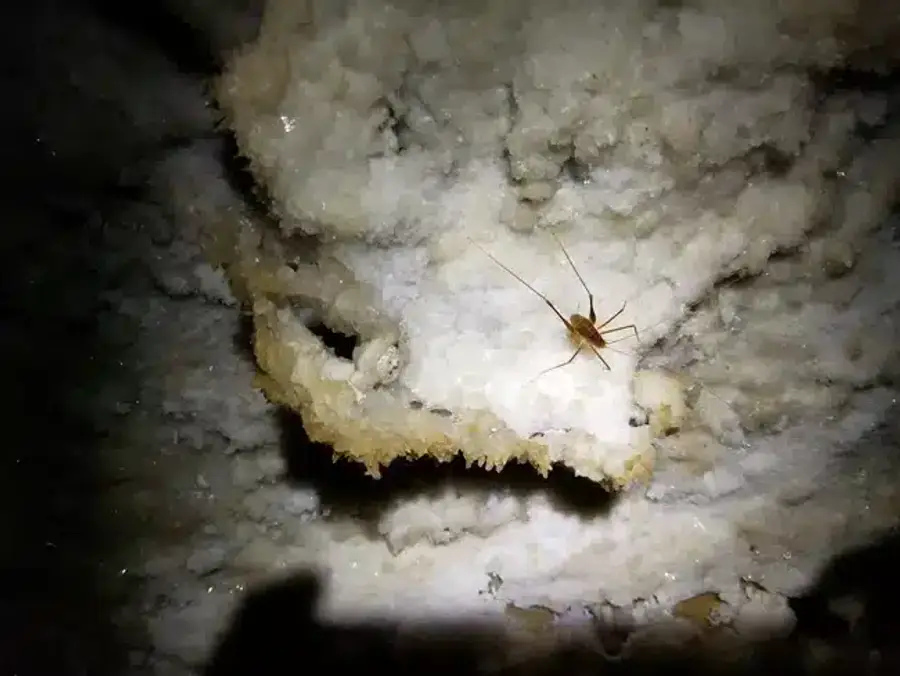
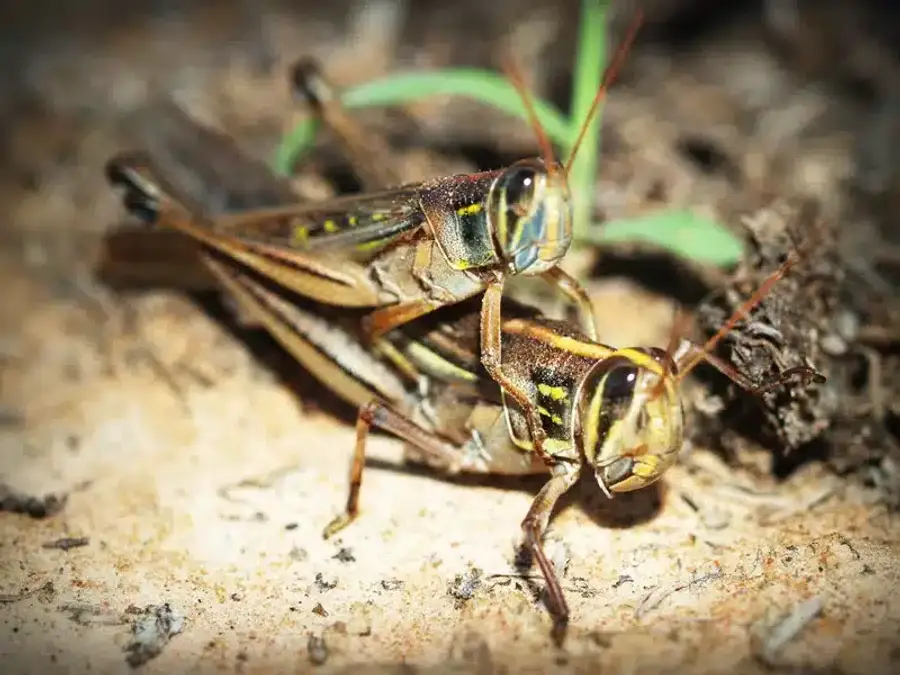
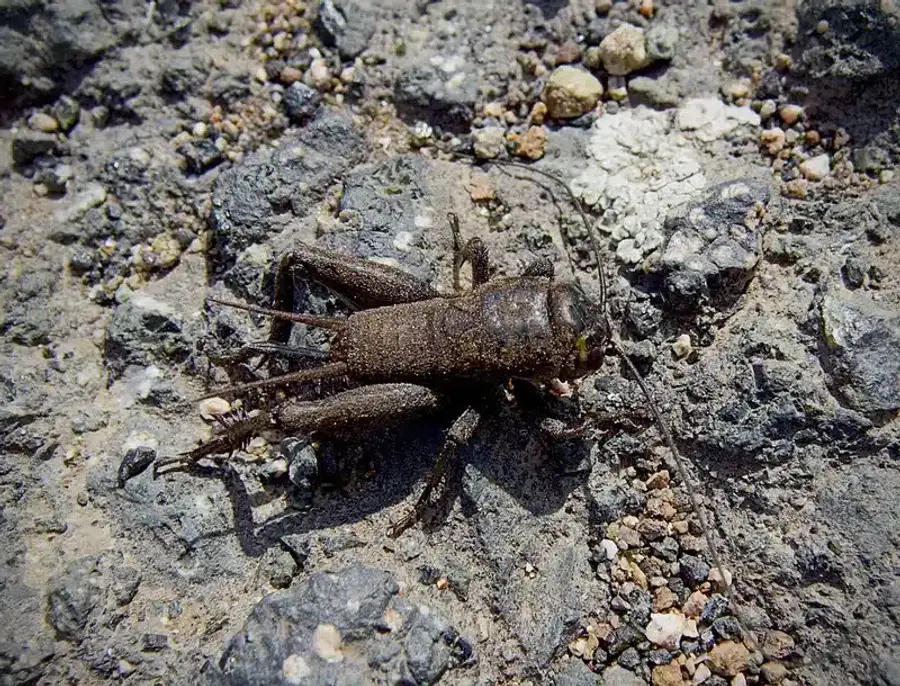
Insecticidal and Chemical Treatments
Baits containing boric acid, hydramethylnon, or indoxacarb offer targeted control with lower environmental impact. These work particularly well for indoor cricket problems. Place baits in areas where children and pets cannot access them.
Outdoor barrier sprays using permethrin, bifenthrin, or deltamethrin create protective zones around your home. Apply 2-3 feet up the foundation and 2-3 feet outward. The EPA has updated pyrethroid labels with new drift-mitigation requirements.
For mole crickets, specialized baits with fipronil or bifenthrin plus attractants target first-instar nymphs most effectively. Irrigation within 24 hours of application is essential for proper activation.
Crafting a Cricket Treatment Plan: Tips from the Field
My experience inspecting basements and crawl spaces has taught me that moisture drives most cricket problems. Address humidity issues first, then focus on exclusion and targeted treatments.
Successful treatment plans combine multiple approaches. For example, seal entry points while reducing moisture and installing monitoring traps. This comprehensive approach addresses all factors in the cricket life cycle.
Document your efforts with photos and notes. This helps track which methods work best for your specific situation, similar to approaches used for identifying other household pests.
Communicating Your Cricket Control Plan
Remember that chirping doesn’t indicate structural threats, but it does signal entry points that need attention. Focus on the message that moisture and lights drive most cricket infestations.
Pesticides should be supplementary to exclusion and moisture control. Long-term relief comes from making your home less attractive to crickets throughout their cricket life cycle.
Take photos of crickets you find for proper identification. Contact local Extension offices if you’re unsure about species identification before starting treatment programs.
Whether you’re dealing with house crickets in your utility room or camel crickets in your crawl space, understanding the cricket life cycle helps you choose the right approach. Focus on exclusion, moisture control, and targeted treatments for the best results.
Frequently Asked Questions
What is the cricket life cycle?
+
The cricket life cycle includes three stages: egg, nymph, and adult. Female crickets lay eggs in soil or organic matter, nymphs molt several times as they grow, and adults emerge ready to mate. House crickets complete this cycle in about 55-60 days at optimal temperatures, while field crickets typically take a full year in our region.
How can I tell if I have field crickets or camel crickets in my basement?
+
Field crickets are glossy black, have wings, and make chirping sounds. Camel crickets are tan-brown, wingless, hump-backed, and completely silent. Field crickets are attracted to light sources, while camel crickets prefer dark, humid areas. Both species jump when disturbed, but camel crickets often jump toward the threat.
When are crickets most active and why do they chirp?
+
Most crickets are nocturnal and most active between 8 PM and 3 AM. Male crickets chirp to attract females for mating, which is a crucial part of their **cricket life cycle**. The chirping rate often increases with temperature. Camel crickets don't chirp at all since they use different mating behaviors.
What signs indicate a cricket infestation?
+
Listen for chirping sounds, especially at night in basements or crawl spaces. Look for gnawed fabrics or papers, particularly items soiled with perspiration or food. You might find fecal smears on stored boxes or joists. For mole crickets outdoors, watch for spongy turf, raised tunnels, or thinning grass patches.
How long do house crickets live indoors?
+
Adult house crickets typically live 2-3 months indoors under favorable conditions. However, since they can complete their entire **cricket life cycle** indoors, populations can persist year-round. Females lay around 700 eggs during their lifetime, which means small populations can grow quickly in heated spaces.
Can I treat crickets myself or should I call a professional?
+
Simple cases often respond to DIY exclusion and moisture control measures. Seal gaps around utilities, reduce humidity, and use sticky traps for monitoring. However, persistent infestations or multiple species problems usually require professional identification and treatment planning. Our registered technicians can properly identify species and develop comprehensive strategies.
What non-chemical methods work best against crickets?
+
Focus on exclusion by sealing gaps 1/8 inch or smaller around doors, windows, and utilities. Maintain an 18-24 inch vegetation-free band around your foundation. Use yellow LED bulbs instead of white lights to reduce attraction. Address moisture problems with dehumidifiers and proper drainage. Vacuum captures and sticky traps provide immediate relief.
How often should I inspect for crickets?
+
Check humid areas like basements and crawl spaces monthly during peak season (late summer through early fall). For camel crickets specifically, inspect in April and September when they're most likely to seek new moisture sources. Use sticky traps for ongoing monitoring, checking them weekly during active periods.
Will sealing gaps alone eliminate cricket problems?
+
Exclusion is extremely important but rarely sufficient by itself. Crickets need moisture, food, and shelter to complete their **cricket life cycle**. Address all three factors for effective control: seal entry points, reduce humidity and moisture sources, eliminate food sources like pet food or organic debris, and remove harborage areas near your foundation.
Are camel crickets harmful to my home or health?
+
Camel crickets don't bite humans or cause structural damage like termites might. They can be startling because they jump toward threats, but they're primarily nuisance pests. They may gnaw on fabrics, especially items with perspiration or food residue. Their main impact is creating an uncomfortable living environment and leaving fecal stains in storage areas.
With five years of hands-on experience in the pest control industry, George Schulz is a registered technician with the Virginia Pest Management Association and a proud third-generation professional in a family business that's been protecting homes for over 57 years. He manages and trains a team of service pros while also leading internal research efforts—recently spearheading a deep-dive review of thousands of documents on pest control materials to hand-pick the most kid and pet friendly, most effective solutions tailored specifically for homes in the DC metro area.
